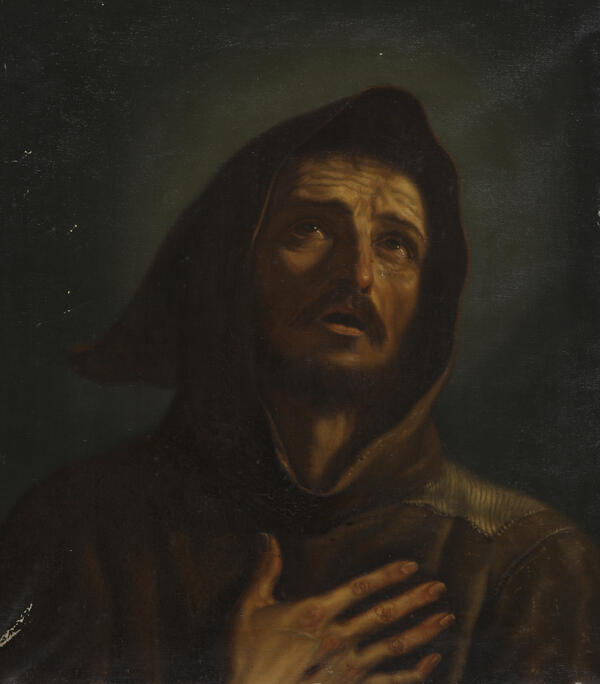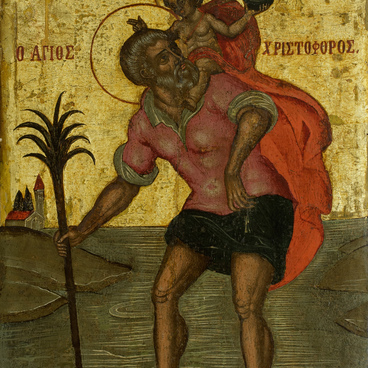Giovanni Francesco Barbieri, also known as Guercino, was an Italian painter, a representative of the 17th-century Bologna school. The emotional intensity and dramatism of the images, and the strenuous contrast of light and shadow of the early period of Guercino’s work remind of the art of Caravaggio. Besides, his paintings bear characteristic features of the Baroque; in particular, they are ornate and have a dynamic composition. After Guercino had moved to Rome in 1621 at the age of thirty, his artistic manner changed towards being calmer and more balanced, which was characteristic of classicism.
The Primorye Art Gallery houses a painting “Praying Monk” by an unknown artist, presumably of the 19th century. The history of the painting is not quite clear. The art gallery received it from the Pavlovsk Palace Museum in 1967. On the back of the painting, there is a monogram of Empress Maria Feodorovna. Despite the quality of the painting, the question arises how a late copy of Guercino got into the collection of the royal family. This curious fact remains interesting for future research.
The painting depicts a monk with an expressive three-quarter turn of the head characteristic of Guercino. It is not known from which work the copy was made. However, the tonal painting and the predominance of brown color allow to conclude that the original belonged to the early period of Guercino’s work. The Pushkin State Museum of Fine Arts houses a painting “Saint Francis” attributed to Guercino, similar to the work from the collection of the Primorye Art Gallery. It can therefore be assumed that the monk depicted in the painting from the gallery’s collection is Saint Francis.
Francis of Assisi is a Catholic saint. Traditionally, he is depicted in a monastic cassock, belted with a rope with three knots, symbolizing the three vows he made: those of poverty, chastity, and obedience. Despite the fact that the belt cannot be seen, the patched monk’s cassock made of brown fabric and the stigmata on the arm confirm the assumption that this is in fact Saint Francis.
The Primorye Art Gallery houses a painting “Praying Monk” by an unknown artist, presumably of the 19th century. The history of the painting is not quite clear. The art gallery received it from the Pavlovsk Palace Museum in 1967. On the back of the painting, there is a monogram of Empress Maria Feodorovna. Despite the quality of the painting, the question arises how a late copy of Guercino got into the collection of the royal family. This curious fact remains interesting for future research.
The painting depicts a monk with an expressive three-quarter turn of the head characteristic of Guercino. It is not known from which work the copy was made. However, the tonal painting and the predominance of brown color allow to conclude that the original belonged to the early period of Guercino’s work. The Pushkin State Museum of Fine Arts houses a painting “Saint Francis” attributed to Guercino, similar to the work from the collection of the Primorye Art Gallery. It can therefore be assumed that the monk depicted in the painting from the gallery’s collection is Saint Francis.
Francis of Assisi is a Catholic saint. Traditionally, he is depicted in a monastic cassock, belted with a rope with three knots, symbolizing the three vows he made: those of poverty, chastity, and obedience. Despite the fact that the belt cannot be seen, the patched monk’s cassock made of brown fabric and the stigmata on the arm confirm the assumption that this is in fact Saint Francis.



